Trivia Browser

▲
1
▼
During the early stages of development, there was going to be a Fugitive Team with Chang, Choi, and a third "vicious criminal" character. This third character would later be replaced with Kim for unspecified reasons.
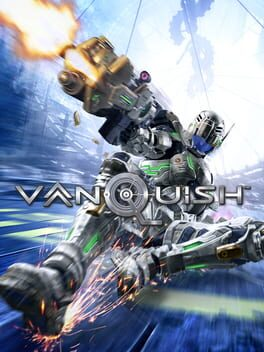
▲
1
▼
In a 2020 interview conducted by the YouTube channel Archipel with the game's creator Shinji Mikami, he talked about the development of Vanquish, which started after he left Capcom and joined PlatinumGames. While he claimed to not remember how he arrived at working on or coming up with the concept for Vanquish, he pitched 5 different project ideas beforehand to Sega and Platinum:
From the start, Mikami wanted to make an open-world game set in a universe similar to the film "Blade Runner", but due to budget, time and staffing constraints, he considered the project to be impossible to make. Regardless, Mikami drafted a design document that he formally pitched to Platinum as a coping mechanism in order to clear his head of the long-gestating idea and work on other projects, stating "I just couldn't switch my mind for a project that fit budget and resources before I gave form to this one. So I just presented it".
Afterwards he moved on to a completely different project; a cel-shaded game set in a universe akin to the works of Studio Ghibli entitled "The Witch and the Piglet". The game was about an evil witch who turned a prince into a piglet and cursed the accompanying village. The villagers would be friendly by day, but at night, they would turn into animals such as horses, pigs, and goats, and do "terrible things" every night, in turn revealing the villagers' evil sides. The main protagonist, a girl with "magical powers who could hover in the sky with an umbrella", had to defeat the witch and break the curse. Mikami believed the game was a mid-scale project that could be easily managed within a given budget and really wanted to make it happen, so he pitched it to Sega. However, Sega strongly declined the pitch, saying that they weren't looking for a game like The Witch and the Piglet.
Angered, Mikami moved on to another project designed exclusively for the Nintendo DS. The game was about a girl with psychic powers and an unknown serial killer who were confined in a hospital. The killer would murder people in the building one by one, and the girl had to figure out if the killer was a doctor, a nurse, or a patient. She used her powers to fight with the killer remotely, move things from a distance, take limited control of peoples' minds, and used a smartphone to send texts and chat during battles, all the while the killer would threaten to kill more people the closer she was to him. One of the central gameplay mechanics involved selecting floating Kanji on the Touchscreen to form two-word phrases such as "Drop Vase" or "Open Door", and watch the results on the hospital's surveillance cameras. Upon pitching it, Sega also rejected the game for the same reason as The Witch and the Piglet, stating the projects were too small and not what they were looking for.
Mikami then recounted an incident during the same meeting, where Sega's executives told him that they were looking for a "Taisaku", or a major project. In response, and angrier than before, he came up with a pitch on the spot called "Keiko and Taisaku", about two delinquent gang leaders, a boy and a girl dressed in high school uniforms, that fought each other, proclaiming "Here, you get Keiko and Taisaku, there's Taisaku in it so it works right?" Sega's executives silently ignored the pitch. Mikami recalled that after this incident came the back-and-forth talks that lead to him working on Vanquish.
Sometime in-between these events, Mikami also had an idea for a rhythm action game that he promptly scrapped after pitching it to Platinum, believing that the idea was not as fun as he had thought it was after presenting it.
From the start, Mikami wanted to make an open-world game set in a universe similar to the film "Blade Runner", but due to budget, time and staffing constraints, he considered the project to be impossible to make. Regardless, Mikami drafted a design document that he formally pitched to Platinum as a coping mechanism in order to clear his head of the long-gestating idea and work on other projects, stating "I just couldn't switch my mind for a project that fit budget and resources before I gave form to this one. So I just presented it".
Afterwards he moved on to a completely different project; a cel-shaded game set in a universe akin to the works of Studio Ghibli entitled "The Witch and the Piglet". The game was about an evil witch who turned a prince into a piglet and cursed the accompanying village. The villagers would be friendly by day, but at night, they would turn into animals such as horses, pigs, and goats, and do "terrible things" every night, in turn revealing the villagers' evil sides. The main protagonist, a girl with "magical powers who could hover in the sky with an umbrella", had to defeat the witch and break the curse. Mikami believed the game was a mid-scale project that could be easily managed within a given budget and really wanted to make it happen, so he pitched it to Sega. However, Sega strongly declined the pitch, saying that they weren't looking for a game like The Witch and the Piglet.
Angered, Mikami moved on to another project designed exclusively for the Nintendo DS. The game was about a girl with psychic powers and an unknown serial killer who were confined in a hospital. The killer would murder people in the building one by one, and the girl had to figure out if the killer was a doctor, a nurse, or a patient. She used her powers to fight with the killer remotely, move things from a distance, take limited control of peoples' minds, and used a smartphone to send texts and chat during battles, all the while the killer would threaten to kill more people the closer she was to him. One of the central gameplay mechanics involved selecting floating Kanji on the Touchscreen to form two-word phrases such as "Drop Vase" or "Open Door", and watch the results on the hospital's surveillance cameras. Upon pitching it, Sega also rejected the game for the same reason as The Witch and the Piglet, stating the projects were too small and not what they were looking for.
Mikami then recounted an incident during the same meeting, where Sega's executives told him that they were looking for a "Taisaku", or a major project. In response, and angrier than before, he came up with a pitch on the spot called "Keiko and Taisaku", about two delinquent gang leaders, a boy and a girl dressed in high school uniforms, that fought each other, proclaiming "Here, you get Keiko and Taisaku, there's Taisaku in it so it works right?" Sega's executives silently ignored the pitch. Mikami recalled that after this incident came the back-and-forth talks that lead to him working on Vanquish.
Sometime in-between these events, Mikami also had an idea for a rhythm action game that he promptly scrapped after pitching it to Platinum, believing that the idea was not as fun as he had thought it was after presenting it.

▲
1
▼
According to a 1999 Nice Games magazine interview with game's director Hideo Kojima, he was asked if the game was originally released for the PC-9821 computer, knowing that it had a very long development cycle:
"Yeah, that was crazy. It was progressing pretty well at first, and by 1990 I had all the storyboarding done—I did it all myself, you see. But thanks to a department transfer at Konami, and the PC Engine port of Snatcher, for awhile I didn’t have much time to work on it. So then when we were working on the PC-9821 version, by that point there was already talk about the next-gen hardware, and that’s how it ended up getting ported to the 3DO, Playstation, and Saturn."

▲
1
▼
According to a 1993 Hippon Super magazines interview with the game's producer/scenario writer Hiromichi Tanaka, he was asked what were the biggest things he wanted to accomplish with the development of the game. He responded:
"Our earliest concept for the game revolved around our consideration of the state of RPGs today. We felt like mainstream RPGs had gotten kind of stale, only differing in the stories and scenarios they offer, but otherwise all having the same basic format."
"Trapped in the same old gameplay systems that have become “standard” for RPGs, only changing up the story… that’s boring. The RPG genre is supposed to be about being able to do anything you want. Is ignoring the gameplay systems and just focusing on story really the right way to go…?"
"Trapped in the same old gameplay systems that have become “standard” for RPGs, only changing up the story… that’s boring. The RPG genre is supposed to be about being able to do anything you want. Is ignoring the gameplay systems and just focusing on story really the right way to go…?"
Franchise: The Legend of Zelda
▲
1
▼
 In a 1994 interview with the game's creator Shigeru Miyamoto, featured in the liner notes of "The Legend of Zelda: Sound and Drama" CD, he was asked what themes he was trying to convey through the series as a whole? He responded:
In a 1994 interview with the game's creator Shigeru Miyamoto, featured in the liner notes of "The Legend of Zelda: Sound and Drama" CD, he was asked what themes he was trying to convey through the series as a whole? He responded:"An everyday boy gets drawn into a series of incredible events and grows to become a hero. Within that framework, I wanted to create a game where the player could experience the feeling of exploration as he travels about the world, becoming familiar with the history of the land and the natural world he inhabits. That is reflected in the title: “the legend of ____”"
"Adventure games and RPGs are games where you advance the story through dialogue alone, but we wanted players to actually experience the physical sensation of using a controller and moving the character through the world. We wanted dungeons to be explorable with a simple mapping system. These and similar ideas were what we wanted to experiment with in Zelda. These themes are carried forward in the SFC Zelda as well."

▲
1
▼
In a 1994 interview with the game's creator Shigeru Miyamoto, featured in the liner notes of "The Legend of Zelda: Sound and Drama" CD, he was asked what were the things he struggled with during the game's development. He responded:
"We were brimming with new ideas on how to fully utilize the Disk System’s new capabilities: a name entry system, using better music, recording the player’s progress, and so forth. In that sense it was a very fun game to create. The flip side of doing something new, however, is that Zelda was a game where we were very concerned whether players would understand what they were supposed to do (much like the fear Nakamura had when Dragon Quest was first released). Once we decided there’d be riddles and puzzles in Zelda, that carried a lot of anxiety with it as well. Some of the puzzles are quite difficult to solve, after all."
"Since we were working on Super Mario at the same time, once Mario was finished, we grabbed the Mario programmers and used them for Zelda in a final programming sprint. That was really tough."
"Since we were working on Super Mario at the same time, once Mario was finished, we grabbed the Mario programmers and used them for Zelda in a final programming sprint. That was really tough."

▲
1
▼
In a 1994 interview with the game's creator Shigeru Miyamoto, featured in the liner notes of "The Legend of Zelda: Sound and Drama" CD, Miyamoto revealed that his team started development on the game as a launch title for the 1984 Famicom Disk System. Shortly before that, they began working on Super Mario Bros., which lead to a period of 5 to 7 months where they worked on both games simultaneously, consequently causing the design stage of development to be very busy.

▲
1
▼
According to game's planner/scenario writer Hiroyuki Takahashi & assistant producer from Nintendo Toshiharu Izuno in a 2001 Nintendo Dream magazine interview, when Hiroyuki read the scenario, he came to believe that if they included the full story then the full playtime would likely be over 100 hours. Hiroyuki had doubts about whether such an epic amount was appropriate for a handheld game, and thought 40 or 50 hours would be a better volume for one game.
Izuno added that there was no need for a fixation on having it all in one game, and that his team had the idea early in development to switch protagonists for the second half of the story. They planned for Jasmine, Garcia, and Sheba to be the leads in the second Golden Sun game, with Alex's fate left unstated until the game's release.
Izuno added that there was no need for a fixation on having it all in one game, and that his team had the idea early in development to switch protagonists for the second half of the story. They planned for Jasmine, Garcia, and Sheba to be the leads in the second Golden Sun game, with Alex's fate left unstated until the game's release.

▲
1
▼
According to game's director Chihiro Fujioka in a 1995 Family Computer Magazine and Haou interview, he was asked if Nintendo shot down any of Square's ideas for the game, to which he responded:
"We had periodic meetings with [Shigeru] Miyamoto, and he thought the majority of our ideas were interesting. He would rarely say a certain idea was “bad”; rather, he would point out how if we changed this, or re-arranged that, it would be more interesting, and more “Mario”-like. He gave us a lot of advice like that, which we used to adjust things in the game."
"Another thing was that, before we even started making Mario RPG specifically, we had this pre-conception at Square that RPGs==weapons. As our conversations progressed with Miyamoto, however, it became clear that this would be weird for a Mario game, that it didn’t seem to fit. When we realized that, it was a huge change in the direction of the development. We had always imagined the enemies would have weapons though. One thing we did leave in was the hammer, which Miyamoto insisted on having. Personally, I think getting hit with a hammer is more painful than being cut by a sword, but… (laughs)"
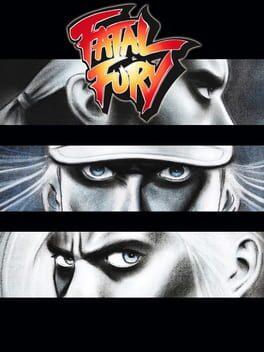
▲
1
▼
Terry Bogard was originally going to be the younger sibling instead of Andy, but for unknown reasons, Terry was made the older brother.
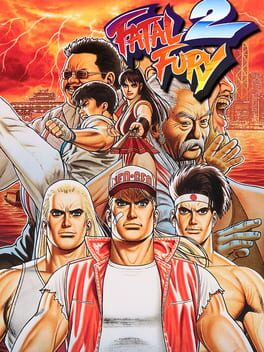
▲
1
▼
During the early development of Fatal Fury 2, SNK had two different ideas for Japanese characters: a male ninja named Ninja Master and a female idol. Ninja Master had been around 60% completed before being scrapped. However, many of his design elements were used for the design of the idol character, who would eventually become Mai Shiranui. The design for her "tail" was taken from his long scarf.
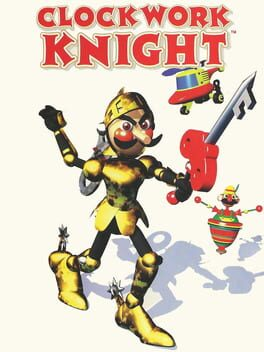
▲
1
▼
In a 1995 interview with the game's producer Noriyoshi Ooba, found within the Sega Saturn Magazine (JP), he stated that the opening CG cutscene took almost 6 months to make. His team then recorded and produced the song featured in the cutscene at Sega's in-house digital recording studio, stating:
"It’s kind of amazing, to be able to do that kind of professional music recording at Sega offices. (laughs) I thought the song was really good too. It matched the visuals quite well, and the country style evoked the suburban American landscape."
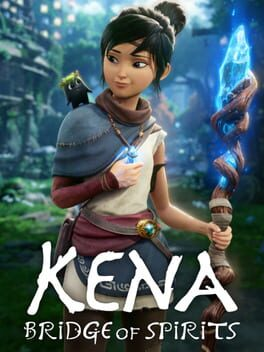
▲
1
▼
When composer Jason Gallaty wanted a wholly traditional Balinese score, he reached out to Balinese music group Gamelan Çudamani for their assistance since their traditional music fit his ideas. However, the group was initially thinking of turning down the offer because as traditionalists, they viewed video games and their music as things they were "working against". The Gamelan group eventually put their prejudices aside and warmed up to the idea however, because the game and its themes as described by Gallaty really struck a chord with them.
"...The themes [of the game] are so beautiful and so resonant with our culture and our values and philosophy. And you know, it’s exciting to see that."
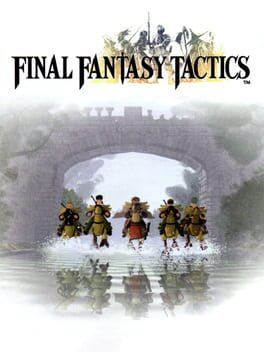
▲
1
▼
In a 1997 interview with the game's director Yasumi Matsuno, found within the Famicon Tsuushin magazine, he was asked if terrain effects were in the game. He reponded:
"“Strategy games must have terrain effects” — we didn’t want to be bound by that way of thinking. As far as the player’s experience, though, I do think terrain effects are fine if they’re for easily recognizable and obvious situations, like the difference between playing volleyball in a gym and on a sandy beach. But yeah, the effects we did add were a product of that way of thinking—the user’s experience—rather than arising from strategy conventions."

▲
1
▼
Early designs for Chang had him wearing a traditional striped prison jumpsuit. This, however, proved difficult to animate, so his outfit was changed to plain white cloth with a skull and crossbones mark. This also turned out to be too difficult, so he was given an even simpler "tunic and chains" design.
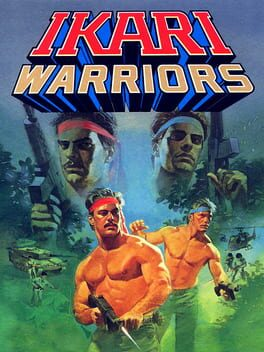
▲
1
▼
The game was originally planned to be an official licensed adaptation of the second film in the Rambo series, titled "Rambo: Ikari no Dasshutsu" ("Rambo: The Furious Escape"). However, SNK was unable to acquire the rights to the film, resulting in the game's title being shortened to Ikari, referencing part of the film's Japanese title.
After the game was released in North America, SNK got in touch with the film's star Sylvester Stallone, who was personal friends with the president of the SNK sales office in America, about acquiring the rights to the film. However, by that point it was too late as the game had already become well known by its Japanese title "Ikari" among North American players after being debuted at an American arcade expo, leading to the deal falling through and the game being officially released as Ikari Warriors in North America.
After the game was released in North America, SNK got in touch with the film's star Sylvester Stallone, who was personal friends with the president of the SNK sales office in America, about acquiring the rights to the film. However, by that point it was too late as the game had already become well known by its Japanese title "Ikari" among North American players after being debuted at an American arcade expo, leading to the deal falling through and the game being officially released as Ikari Warriors in North America.

▲
1
▼
The native children in the background of the Brazil stage were originally going to flash their buttocks. This idea was dropped after being deemed too distracting and distasteful.

▲
1
▼
 Athena was originally planned to wear her schoolgirl uniform from her original appearance in Psycho Soldier. However, out of concern that overseas audiences wouldn't understand the reference, Athena received a redesign, prominently displayed in her entrance animation which starts her in the original schoolgirl outfit before throwing it off to reveal the new outfit. Athena's entrance animation is also the only one in the game to use 16 sprites, and her Shining Crystal Super Move was programmed in by the developers before proper work on the character had actually begun with the game's planners.
Athena was originally planned to wear her schoolgirl uniform from her original appearance in Psycho Soldier. However, out of concern that overseas audiences wouldn't understand the reference, Athena received a redesign, prominently displayed in her entrance animation which starts her in the original schoolgirl outfit before throwing it off to reveal the new outfit. Athena's entrance animation is also the only one in the game to use 16 sprites, and her Shining Crystal Super Move was programmed in by the developers before proper work on the character had actually begun with the game's planners.
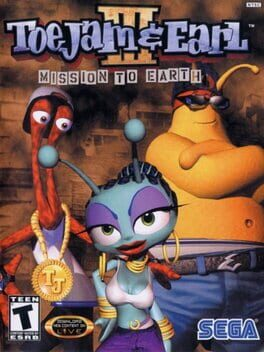
▲
2
▼
 The design of the Anti-Funk, the final boss of the game, originally resembled the hood of a Ku Klux Klan member. This design made it into early review copies of the game before Sega discovered its existence and rejected it, forcing the developers to change it to a skull just before the game's release. In a 2003 Xbox Nation magazine interview with series creator Greg Johnson, he elaborated on the origin of the design:
The design of the Anti-Funk, the final boss of the game, originally resembled the hood of a Ku Klux Klan member. This design made it into early review copies of the game before Sega discovered its existence and rejected it, forcing the developers to change it to a skull just before the game's release. In a 2003 Xbox Nation magazine interview with series creator Greg Johnson, he elaborated on the origin of the design:"When I was doing it, it was actually an accident. We had done a bunch of designs for the Anti-Funk, and the artist had done this unintentionally. I looked at it and said, “Wow, that’s funny. That looks like a Ku Klux Klan hat.” And then I thought about it for a second and I said, “Well hey, what better villain for these black characters who are spreading the funk than the love and this kind of oblique reference?” Because it wasn’t [obvious]—it was open to interpretation."
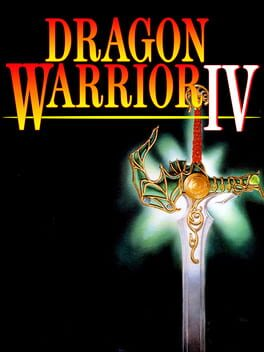
▲
1
▼
In a 1989 interview with the game's director/scenario writer Yuji Horii in the 11/89 edition of Famicon Tsuushin, he was asked where the idea for the mini medals, a recurring hidden collectible in the series first introduced in Dragon Warrior IV, came from? He responded:
"DQIV is a multi-chapter story, and you ultimately end up gathering eight party members together, so we thought adding a bunch of story items you had to collect on top of that would be too much, and annoying. But collecting things like “orbs” and “crests” is undoubtedly one of the appeals of Dragon Quest, so we wanted to give players something to collect."
"“Ah hah! Coins!” — that was our first idea, and small medals were originally “gold coins”. But that name was too easily confused with the coins at the casino. Then we remembered the idea we had for “small medals” for Dragon Quest III, 2 and that’s how they got their name. (laughs)"
"“Ah hah! Coins!” — that was our first idea, and small medals were originally “gold coins”. But that name was too easily confused with the coins at the casino. Then we remembered the idea we had for “small medals” for Dragon Quest III, 2 and that’s how they got their name. (laughs)"